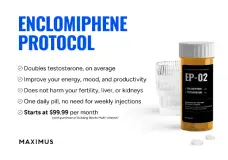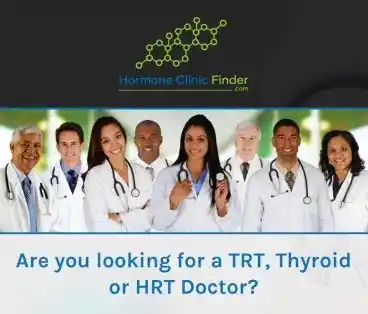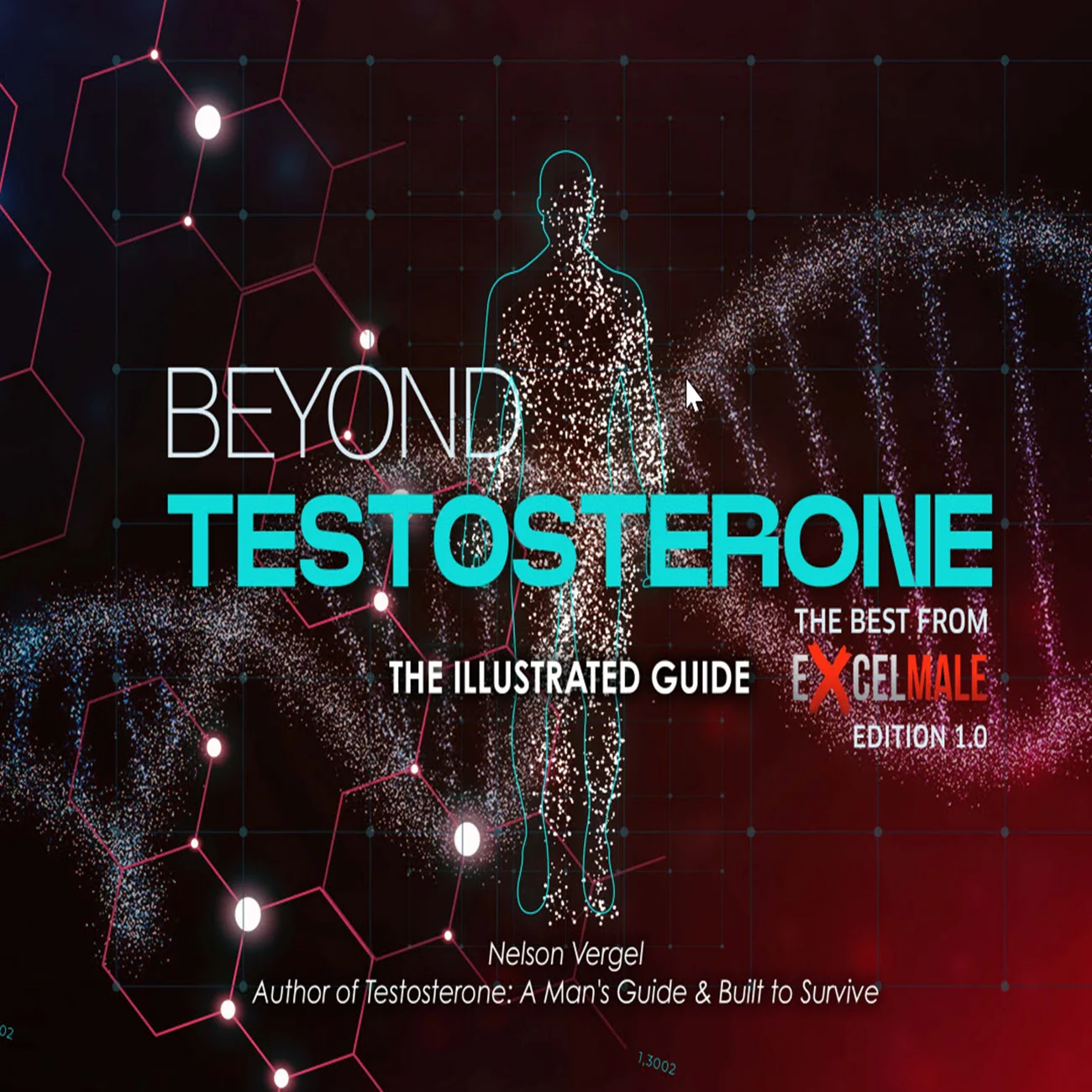These are not usually what many US clinics follow, but I wanted to show what the guidelines say.
Comparison of U.S. Clinical Guidelines on Hormone Replacement Therapy (HRT) in Women
Multiple U.S. medical organizations—including The Menopause Society (formerly NAMS), ACOG, the Endocrine Society, and AACE—have published guidelines on the use of hormone replacement therapy in women. Overall, these guidelines align on the major principles of HRT use, with an emphasis on individualized therapy based on a woman’s menopausal status, symptom severity, age, and uterine/ovarian status. Below is a summary of current recommendations for premenopausal women with premature menopause (including those with surgical removal of ovaries or uterus) versus postmenopausal women, outlining key points for each category:
· Indications and formulations
· Preferred routes
· Benefits and risks
· Contraindications
· Monitoring/duration
· Differences based on presence or absence of uterus or ovaries
Comparison tables are provided to highlight differences where appropriate.

Premenopausal Women with Premature Menopause (POI or Surgical Menopause)
This group includes women who experience menopause before the typical age (e.g., due to primary ovarian insufficiency (POI) or surgical removal of ovaries). Such women are biologically “premenopausal” by age but have estrogen deficiency due to ovarian failure or oophorectomy.
1. Indications & Formulations
· HRT is strongly indicated in women with POI or surgical menopause to treat hypoestrogenic symptoms and prevent long-term health risks associated with early estrogen loss.
· POI is a pathologic condition, not to be viewed as normal menopause; therapy should be provided unless contraindicated.
· FDA-approved indications for HRT include:
o Bothersome vasomotor symptoms
o Prevention of bone loss/osteoporosis
o Genitourinary symptoms
o Hypoestrogenism due to hypogonadism, premature ovarian failure, or surgical castration
· In young women with estrogen deficiency, HRT:
o Alleviates symptoms (hot flashes, night sweats, vaginal dryness)
o Mitigates elevated risks of osteoporosis, fractures, cardiovascular disease, and cognitive or affective disorders
· Formulations:
o Intact uterus: Estrogen plus a progestogen (to protect the endometrium). Acceptable: transdermal or oral estradiol or conjugated estrogens combined with a progestin (e.g., micronized progesterone or medroxyprogesterone). Micronized progesterone is preferred.
o No uterus: Estrogen-only therapy (no progestogen needed).
o Dose: Should aim at full replacement levels (approximating normal premenopausal estrogen exposure), not the low doses used in older women.
o Combined hormonal contraceptives are acceptable in young women who also desire contraception.
o Local vaginal estrogen may be added for severe genitourinary symptoms.
2. Preferred Routes of Administration
· Both transdermal and oral estrogen routes are used, but transdermal estrogen (patch, gel, or spray) is often favored for improved safety and steady delivery.
· Transdermal formulations bypass the liver and are associated with a lower risk of venous thromboembolism (VTE) and perhaps stroke compared to oral estrogen.
· Progestogen component: Can be given as daily (continuous combined therapy) or cyclic (10–14 days per month).
· Estrogen/SERM combination (conjugated estrogen with bazedoxifene) is another option for women with a uterus.
· Vaginal estrogen is preferred for isolated urogenital symptoms.
3. Benefits and Risks
· Benefits: In women with premature menopause, the benefits of HRT generally far outweigh the risks.
o Most effective treatment for menopausal symptoms
o Prevents vaginal atrophy and improves quality of life
o Maintains bone density and prevents osteoporosis-related fractures
o Mitigates increased risk of cardiovascular disease
o May reduce all-cause mortality to levels closer to peers without early menopause
· Risks: Relatively low in this young population.
o Standard HRT risks still apply (e.g., endometrial hyperplasia/cancer if uterus is intact and no progestin is used, small risk of VTE, gallbladder disease, thromboembolic stroke)
o Breast cancer risk is a much smaller concern in this age group
4. Contraindications
· Same as for any systemic estrogen therapy:
o Unexplained vaginal bleeding
o Active or prior estrogen-sensitive cancer
o History of DVT, PE, stroke, or myocardial infarction
o Known heritable thrombophilia at high risk of clot
o Severe active liver disease
· Family history of breast cancer or BRCA mutation without personal cancer is not an absolute contraindication.
· If systemic HRT is contraindicated, non-hormonal options are recommended.
5. Monitoring and Duration
· Recommended duration: Continue until the average age of natural menopause (~50–51 years), at minimum, provided it remains safe.
· Monitoring: Routine health maintenance (annual blood pressure, breast cancer screening, pelvic exams).
· No special blood tests are required to monitor hormone levels for efficacy.
· Unscheduled vaginal bleeding on HRT requires evaluation.
· Follow-up visits should reassess risk profile and appropriateness of current regimen.
6. Differences in Approach Based on Uterus/Ovaries
· Uterus present: Need estrogen + progestogen
· Uterus absent: Estrogen alone
· Ovaries absent: Strong indication for HRT
Table: HRT Use in Women with Premature Menopause or Surgical Menopause
Postmenopausal Women (Natural or Typical Menopause)
This group includes women in the average age range of menopause (~45–60 years and beyond), whether due to natural cessation of ovarian function or surgical menopause at around the natural age. The approach here is more cautious, balancing symptom relief with long-term risks.
1. Indications & Formulations
· Primary indication: Moderate to severe menopausal symptoms, especially vasomotor symptoms (VMS) such as hot flashes and night sweats.
· Other indications: Genitourinary syndrome of menopause (GSM) and prevention of osteoporosis in high-risk women unable to use other treatments.
· Formulations:
o Systemic estrogen: oral conjugated estrogens (CEE), oral 17β-estradiol, transdermal estradiol patches, gels, or sprays.
o Uterus present: Progestogen must be included (combined therapy) to prevent endometrial hyperplasia.
o No uterus: Estrogen-only therapy.
o Goal: Use the lowest effective dose of estrogen that relieves symptoms.
o Local (vaginal) estrogen for isolated GSM symptoms.
o Non-hormonal therapies (e.g., low-dose paroxetine, SSRIs/SNRIs, gabapentin) are options for those who cannot or do not want to use estrogen.
2. Preferred Routes of Administration
· Transdermal route (patches, gels, sprays) is often preferred for women with risk factors for thrombosis, migraines, or gallbladder disease.
· Oral estrogen is acceptable for many healthy women.
· Vaginal estrogen (low-dose) is preferred for urogenital symptoms only.
· Progesterone for endometrial protection is usually given orally or via combination patches.
· Levonorgestrel IUD can be used for endometrial protection in women on systemic estrogen.
3. Benefits and Risks
· Benefits:
o Most effective therapy for hot flashes and night sweats
o Alleviates vaginal dryness and painful intercourse
o Improves mood, sleep, and overall well-being
o Prevents bone resorption and reduces risk of osteoporotic fractures
o May slightly reduce colon cancer risk
o No increase in all-cause mortality when used in younger postmenopausal women
· Risks:
o Breast cancer: Small increase with estrogen-progestin combination therapy beyond 3–5 years; estrogen-only therapy does not show this risk.
o Endometrial cancer: Unopposed estrogen increases risk; progestin must be used if uterus is intact.
o Venous thromboembolism (VTE): Increased risk, especially with oral estrogen.
o Cardiovascular disease: Risk increases with age and time since menopause; safest if started in early menopause.
o Gallbladder disease: Increased risk, especially with oral estrogen.
o Cognitive effects: Not recommended for prevention of cognitive aging or Alzheimer’s disease.
4. Contraindications
· Absolute contraindications:
o Undiagnosed vaginal bleeding
o Known or suspected breast cancer or estrogen-dependent neoplasm
o History of endometrial cancer (especially if not definitively cured)
o Active or past thromboembolic event (DVT, PE) or stroke
o History of myocardial infarction or angina
o Active severe liver disease
o Pregnancy
o Porphyria cutanea tarda
· Relative contraindications: Strong risk factor profile for stroke/heart attack or multiple VTE risk factors.
5. Monitoring and Duration
· Use the lowest effective dose for the shortest duration that meets treatment goals.
· Routine re-evaluation at least annually.
· Monitoring: Blood pressure, breast exams and mammography, pelvic exams if needed.
· No fixed limit for duration; periodic reevaluation should guide therapy.
· Patient education on signs of complications is essential.
6. Differences in Approach Based on Uterus/Ovaries
· Uterus present: Combined estrogen-progestin therapy (or estrogen/SERM combination) is required for systemic treatment.
· No uterus: Estrogen-only therapy.
· Ovaries’ status is less relevant after menopause; regimen is determined by uterus status.
Table: HRT Approaches Based on Uterus Status for Postmenopausal Women
Note: All organizations highlight the importance of individualizing therapy. Factors such as a woman’s age, time since menopause, personal risk factors, and treatment preferences should guide decisions. Shared decision-making is emphasized to ensure the safest and most effective use of HRT.
Sources:
Comparison of U.S. Clinical Guidelines on Hormone Replacement Therapy (HRT) in Women
Multiple U.S. medical organizations—including The Menopause Society (formerly NAMS), ACOG, the Endocrine Society, and AACE—have published guidelines on the use of hormone replacement therapy in women. Overall, these guidelines align on the major principles of HRT use, with an emphasis on individualized therapy based on a woman’s menopausal status, symptom severity, age, and uterine/ovarian status. Below is a summary of current recommendations for premenopausal women with premature menopause (including those with surgical removal of ovaries or uterus) versus postmenopausal women, outlining key points for each category:
· Indications and formulations
· Preferred routes
· Benefits and risks
· Contraindications
· Monitoring/duration
· Differences based on presence or absence of uterus or ovaries
Comparison tables are provided to highlight differences where appropriate.
Premenopausal Women with Premature Menopause (POI or Surgical Menopause)
This group includes women who experience menopause before the typical age (e.g., due to primary ovarian insufficiency (POI) or surgical removal of ovaries). Such women are biologically “premenopausal” by age but have estrogen deficiency due to ovarian failure or oophorectomy.
1. Indications & Formulations
· HRT is strongly indicated in women with POI or surgical menopause to treat hypoestrogenic symptoms and prevent long-term health risks associated with early estrogen loss.
· POI is a pathologic condition, not to be viewed as normal menopause; therapy should be provided unless contraindicated.
· FDA-approved indications for HRT include:
o Bothersome vasomotor symptoms
o Prevention of bone loss/osteoporosis
o Genitourinary symptoms
o Hypoestrogenism due to hypogonadism, premature ovarian failure, or surgical castration
· In young women with estrogen deficiency, HRT:
o Alleviates symptoms (hot flashes, night sweats, vaginal dryness)
o Mitigates elevated risks of osteoporosis, fractures, cardiovascular disease, and cognitive or affective disorders
· Formulations:
o Intact uterus: Estrogen plus a progestogen (to protect the endometrium). Acceptable: transdermal or oral estradiol or conjugated estrogens combined with a progestin (e.g., micronized progesterone or medroxyprogesterone). Micronized progesterone is preferred.
o No uterus: Estrogen-only therapy (no progestogen needed).
o Dose: Should aim at full replacement levels (approximating normal premenopausal estrogen exposure), not the low doses used in older women.
o Combined hormonal contraceptives are acceptable in young women who also desire contraception.
o Local vaginal estrogen may be added for severe genitourinary symptoms.
2. Preferred Routes of Administration
· Both transdermal and oral estrogen routes are used, but transdermal estrogen (patch, gel, or spray) is often favored for improved safety and steady delivery.
· Transdermal formulations bypass the liver and are associated with a lower risk of venous thromboembolism (VTE) and perhaps stroke compared to oral estrogen.
· Progestogen component: Can be given as daily (continuous combined therapy) or cyclic (10–14 days per month).
· Estrogen/SERM combination (conjugated estrogen with bazedoxifene) is another option for women with a uterus.
· Vaginal estrogen is preferred for isolated urogenital symptoms.
3. Benefits and Risks
· Benefits: In women with premature menopause, the benefits of HRT generally far outweigh the risks.
o Most effective treatment for menopausal symptoms
o Prevents vaginal atrophy and improves quality of life
o Maintains bone density and prevents osteoporosis-related fractures
o Mitigates increased risk of cardiovascular disease
o May reduce all-cause mortality to levels closer to peers without early menopause
· Risks: Relatively low in this young population.
o Standard HRT risks still apply (e.g., endometrial hyperplasia/cancer if uterus is intact and no progestin is used, small risk of VTE, gallbladder disease, thromboembolic stroke)
o Breast cancer risk is a much smaller concern in this age group
4. Contraindications
· Same as for any systemic estrogen therapy:
o Unexplained vaginal bleeding
o Active or prior estrogen-sensitive cancer
o History of DVT, PE, stroke, or myocardial infarction
o Known heritable thrombophilia at high risk of clot
o Severe active liver disease
· Family history of breast cancer or BRCA mutation without personal cancer is not an absolute contraindication.
· If systemic HRT is contraindicated, non-hormonal options are recommended.
5. Monitoring and Duration
· Recommended duration: Continue until the average age of natural menopause (~50–51 years), at minimum, provided it remains safe.
· Monitoring: Routine health maintenance (annual blood pressure, breast cancer screening, pelvic exams).
· No special blood tests are required to monitor hormone levels for efficacy.
· Unscheduled vaginal bleeding on HRT requires evaluation.
· Follow-up visits should reassess risk profile and appropriateness of current regimen.
6. Differences in Approach Based on Uterus/Ovaries
· Uterus present: Need estrogen + progestogen
· Uterus absent: Estrogen alone
· Ovaries absent: Strong indication for HRT
Table: HRT Use in Women with Premature Menopause or Surgical Menopause
Premature Menopause Scenario | HRT Indicated? | Recommended Regimen | Duration |
Ovarian insufficiency or bilateral oophorectomy, uterus intact | Yes | Estrogen + Progestogen (systemic estradiol or conjugated estrogen with a progestin). Option: CEE + bazedoxifene (SERM) instead of progestin. | Continue until at least age ~50–51 (average natural menopause), then re-assess. |
Ovarian insufficiency or bilateral oophorectomy, no uterus | Yes | Estrogen-only therapy (systemic). No progestin needed. | Continue until ~50–51 years, then re-assess. |
Isolated hysterectomy, ovaries intact, premenopausal (not yet menopausal) | No | N/A – (Consider estrogen-only therapy after menopause since no uterus at that time, if HRT is indicated for symptoms). | Until natural menopause age, just routine observation. Once menopause is reached, treat as per postmenopausal woman without uterus. |
Postmenopausal Women (Natural or Typical Menopause)
This group includes women in the average age range of menopause (~45–60 years and beyond), whether due to natural cessation of ovarian function or surgical menopause at around the natural age. The approach here is more cautious, balancing symptom relief with long-term risks.
1. Indications & Formulations
· Primary indication: Moderate to severe menopausal symptoms, especially vasomotor symptoms (VMS) such as hot flashes and night sweats.
· Other indications: Genitourinary syndrome of menopause (GSM) and prevention of osteoporosis in high-risk women unable to use other treatments.
· Formulations:
o Systemic estrogen: oral conjugated estrogens (CEE), oral 17β-estradiol, transdermal estradiol patches, gels, or sprays.
o Uterus present: Progestogen must be included (combined therapy) to prevent endometrial hyperplasia.
o No uterus: Estrogen-only therapy.
o Goal: Use the lowest effective dose of estrogen that relieves symptoms.
o Local (vaginal) estrogen for isolated GSM symptoms.
o Non-hormonal therapies (e.g., low-dose paroxetine, SSRIs/SNRIs, gabapentin) are options for those who cannot or do not want to use estrogen.
2. Preferred Routes of Administration
· Transdermal route (patches, gels, sprays) is often preferred for women with risk factors for thrombosis, migraines, or gallbladder disease.
· Oral estrogen is acceptable for many healthy women.
· Vaginal estrogen (low-dose) is preferred for urogenital symptoms only.
· Progesterone for endometrial protection is usually given orally or via combination patches.
· Levonorgestrel IUD can be used for endometrial protection in women on systemic estrogen.
3. Benefits and Risks
· Benefits:
o Most effective therapy for hot flashes and night sweats
o Alleviates vaginal dryness and painful intercourse
o Improves mood, sleep, and overall well-being
o Prevents bone resorption and reduces risk of osteoporotic fractures
o May slightly reduce colon cancer risk
o No increase in all-cause mortality when used in younger postmenopausal women
· Risks:
o Breast cancer: Small increase with estrogen-progestin combination therapy beyond 3–5 years; estrogen-only therapy does not show this risk.
o Endometrial cancer: Unopposed estrogen increases risk; progestin must be used if uterus is intact.
o Venous thromboembolism (VTE): Increased risk, especially with oral estrogen.
o Cardiovascular disease: Risk increases with age and time since menopause; safest if started in early menopause.
o Gallbladder disease: Increased risk, especially with oral estrogen.
o Cognitive effects: Not recommended for prevention of cognitive aging or Alzheimer’s disease.
4. Contraindications
· Absolute contraindications:
o Undiagnosed vaginal bleeding
o Known or suspected breast cancer or estrogen-dependent neoplasm
o History of endometrial cancer (especially if not definitively cured)
o Active or past thromboembolic event (DVT, PE) or stroke
o History of myocardial infarction or angina
o Active severe liver disease
o Pregnancy
o Porphyria cutanea tarda
· Relative contraindications: Strong risk factor profile for stroke/heart attack or multiple VTE risk factors.
5. Monitoring and Duration
· Use the lowest effective dose for the shortest duration that meets treatment goals.
· Routine re-evaluation at least annually.
· Monitoring: Blood pressure, breast exams and mammography, pelvic exams if needed.
· No fixed limit for duration; periodic reevaluation should guide therapy.
· Patient education on signs of complications is essential.
6. Differences in Approach Based on Uterus/Ovaries
· Uterus present: Combined estrogen-progestin therapy (or estrogen/SERM combination) is required for systemic treatment.
· No uterus: Estrogen-only therapy.
· Ovaries’ status is less relevant after menopause; regimen is determined by uterus status.
Table: HRT Approaches Based on Uterus Status for Postmenopausal Women
Postmenopausal Woman | HRT Regimen | Notes |
Uterus intact (no hysterectomy) | Estrogen + Progestogen (combined therapy). e.g., transdermal or oral estradiol with micronized progesterone or MPA, or conjugated estrogen with bazedoxifene. | Required to prevent endometrial cancer. Progestin can be continuous (no bleeding) or cyclic (withdrawal bleeding). If only vaginal estrogen (low-dose) is used for GSM, no progestin needed, but any bleeding should be investigated. |
Uterus absent (post-hysterectomy) | Estrogen-only therapy (systemic). e.g., transdermal estradiol patch or oral estrogen alone. | No progestin needed. Simplifies regimen and likely lowers breast cancer risk compared to combined therapy. Estrogen dose can often be somewhat lower than in younger women, titrated to symptoms. |
Note: All organizations highlight the importance of individualizing therapy. Factors such as a woman’s age, time since menopause, personal risk factors, and treatment preferences should guide decisions. Shared decision-making is emphasized to ensure the safest and most effective use of HRT.
Sources:
- The Menopause Society (formerly NAMS) – 2022 Hormone Therapy Position Statement
- ACOG Practice Bulletin No. 141 – Management of Menopausal Symptoms (reaffirmed 2024) ; ACOG Committee Opinion No. 698 – Hormone Therapy in Primary Ovarian Insufficiency
- Endocrine Society – Treatment of Symptoms of Menopause (2015 Clinical Practice Guideline)
- American Association of Clinical Endocrinologists (AACE) – 2017 Menopause Guidelines Update
- U.S. Preventive Services Task Force – 2022 Recommendation on Menopausal Hormone Therapy
- ObG Project – Summary of NAMS Hormone Therapy Statement (contraceptions, risks, etc.)
- Contemporary OB/GYN – “New hormone therapy guidelines from NAMS 2022” (overview of age-specific recommendations)
- AMBOSS/NEJM – Hormone Therapy guidelines summary .
Last edited:












